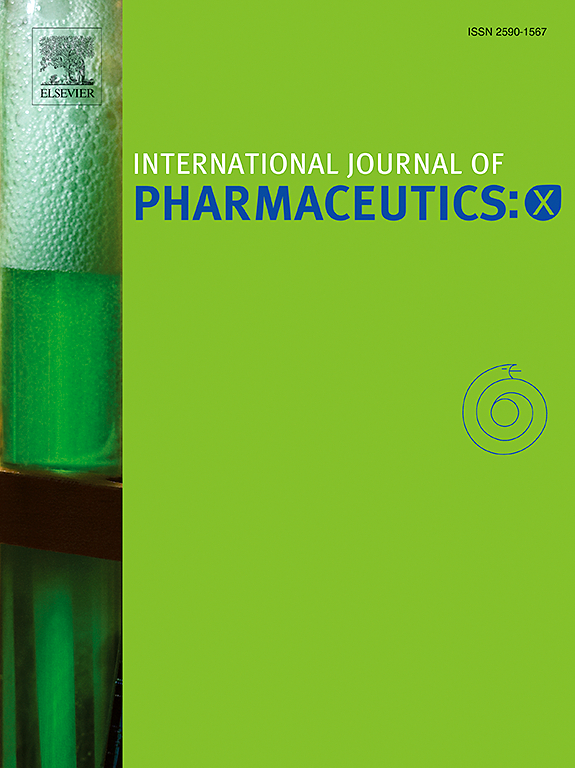Reticuloendothelial system blockade does not enhance siRNA-LNP circulation or tumor accumulation in mice
IF 5.2
2区 医学
Q1 PHARMACOLOGY & PHARMACY
引用次数: 0
Abstract
One of the biggest challenges for siRNA-based therapeutics is intracellular delivery into the target cell, which can be facilitated by encapsulating siRNA in lipid nanoparticles (LNPs). In this study, we formulated D-Lin-MC3-DMA-LNPs encapsulating siRNA against the androgen receptor (AR), a key driver in prostate cancer. We effectively knocked down AR expression at both the mRNA as well as protein levels in vitro in AR-expressing prostate cancer cell lines. However, when moving to in vivo studies, siRNA-LNP efficacy is hindered by rapid clearance by the reticuloendothelial system (RES) in the liver and spleen. We evaluated whether transient RES blockade through systemic pre-administration of dextran sulfate or liposomes could extend the circulation time and enhance tumor accumulation of siRNA-LNPs in tumor-bearing mice. In two different mouse prostate cancer (PCa) xenograft models, we observed that, upon systemic administration, LNPs still predominantly accumulated in the liver and spleen, with only limited tumor uptake. Our findings demonstrate that pre-treatment with dextran sulfate or liposomes did not enhance siRNA-LNP blood circulation time or tumor accumulation in vivo, indicating the need for alternative strategies to enhance siRNA-LNP delivery to tumors.
网状内皮系统阻断不会增强 siRNA-LNP 在小鼠体内的循环或肿瘤蓄积
基于siRNA的治疗方法面临的最大挑战之一是细胞内递送到靶细胞,这可以通过将siRNA包裹在脂质纳米颗粒(LNPs)中来促进。在这项研究中,我们制定了D-Lin-MC3-DMA-LNPs封装siRNA对抗雄激素受体(AR),这是前列腺癌的关键驱动因素。在体外实验中,我们在表达AR的前列腺癌细胞系中有效地降低了AR mRNA和蛋白水平的表达。然而,当进入体内研究时,siRNA-LNP的有效性受到肝脏和脾脏网状内皮系统(RES)快速清除的阻碍。我们评估了通过全身预给药葡聚糖硫酸盐或脂质体进行短暂性RES阻断是否可以延长循环时间并增强荷瘤小鼠siRNA-LNPs的肿瘤积累。在两种不同的小鼠前列腺癌(PCa)异种移植模型中,我们观察到,在全身给药后,LNPs仍然主要积聚在肝脏和脾脏,只有有限的肿瘤摄取。我们的研究结果表明,用葡聚糖硫酸盐或脂质体预处理不会增加siRNA-LNP血液循环时间或体内肿瘤积累,这表明需要其他策略来增强siRNA-LNP向肿瘤的递送。
本文章由计算机程序翻译,如有差异,请以英文原文为准。
求助全文
约1分钟内获得全文
求助全文
来源期刊

International Journal of Pharmaceutics: X
Pharmacology, Toxicology and Pharmaceutics-Pharmaceutical Science
CiteScore
6.60
自引率
0.00%
发文量
32
审稿时长
24 days
期刊介绍:
International Journal of Pharmaceutics: X offers authors with high-quality research who want to publish in a gold open access journal the opportunity to make their work immediately, permanently, and freely accessible.
International Journal of Pharmaceutics: X authors will pay an article publishing charge (APC), have a choice of license options, and retain copyright. Please check the APC here. The journal is indexed in SCOPUS, PUBMED, PMC and DOAJ.
The International Journal of Pharmaceutics is the second most cited journal in the "Pharmacy & Pharmacology" category out of 358 journals, being the true home for pharmaceutical scientists concerned with the physical, chemical and biological properties of devices and delivery systems for drugs, vaccines and biologicals, including their design, manufacture and evaluation. This includes evaluation of the properties of drugs, excipients such as surfactants and polymers and novel materials. The journal has special sections on pharmaceutical nanotechnology and personalized medicines, and publishes research papers, reviews, commentaries and letters to the editor as well as special issues.
 求助内容:
求助内容: 应助结果提醒方式:
应助结果提醒方式:


